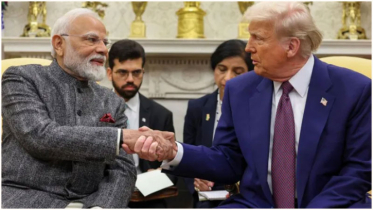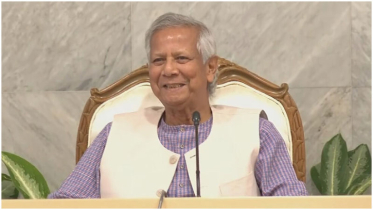India joins China in De-dollarization Drive

In recent years, a movement called “de-dollarization” has gained momentum, as countries seek to reduce their dependence on the US dollar and promote greater economic sovereignty. This trend has been driven by economic and geopolitical challenges faced by many countries under US sanctions or influence.
Several countries are actively pursuing de-dollarization, including China, Russia, Brazil, India, ASEAN nations, Kenya, Saudi Arabia, and the UAE. India, traditionally a close ally of the US, has joined China in promoting its own currency, the rupee, as an alternative to the dollar in global trade.
On March 29th, India unveiled its new foreign trade policy, which allows the use of rupees in trade with countries facing dollar shortages or currency crises. Malaysia is the latest country to join this scheme. The Reserve Bank of India (RBI), India’s central bank, had already decided in July 2022 to allow international trade to be settled in rupees. This move was intended to boost global trade and support the interests of traders who use rupees. India already trades in rupees with Russia, Mauritius, Iran, and Sri Lanka.
India’s interest in de-dollarization is not limited to trade policy. The country has also expressed interest in exploring an alternative to the Society for Worldwide Interbank Financial Telecommunication (SWIFT) with Russia and China. This could allow India to trade with countries under US sanctions using their own currencies. India plans to link its own domestic financial messaging system with Russia’s SPFS and China’s CIPS.
India’s interest in exploring an alternative to SWIFT with Russia and China can be traced back to the sanctions imposed on Iran by the US and its allies. These sanctions have severely restricted Iran’s ability to use the global financial system for trade and investment, as most banks are wary of transacting with the country due to the risk of being penalized by the US.
In response, Iran and its trading partners, including Russia and China, have been working on developing alternative payment systems that bypass SWIFT and allow transactions to be settled in their own currencies. Russia’s SPFS and China’s CIPS are two such systems that have been developed as alternatives to SWIFT.
India’s interest in these systems is driven by its desire to reduce its dependence on the US dollar and avoid the risk of being cut off from the global financial system in the event of US sanctions. By linking its own domestic financial messaging system with SPFS and CIPS, India would be able to settle transactions with these countries using their own currencies, even if they are under US sanctions.
Furthermore, India’s interest in de-dollarization is also influenced by its growing economic ties with Russia and China. India is one of the largest importers of crude oil from Russia, and the two countries have been working on increasing their bilateral trade in other sectors as well. Similarly, India and China have been expanding their economic cooperation in recent years, with the two countries setting a target of $100 billion in bilateral trade by 2022.
Given these factors, it is not surprising that India is actively exploring alternatives to SWIFT and seeking to deepen its economic ties with Russia and China. However, it remains to be seen how successful India will be in promoting the use of these alternative payment systems and reducing its dependence on the US dollar, especially given the dominance of the dollar in the global financial system.Top of Form
However, the de-dollarization process is not a simple one, and it will take many years for any currency to challenge the dominance of the US dollar. Currently, the US dollar accounts for over 58% of global foreign exchange reserves, while the Chinese yuan accounts for only 2.7%. Additionally, the US dollar is widely used for pricing and trading commodities, especially oil. The US also has significant influence over global financial institutions and trade.
Despite the challenges, the de-dollarization trend is accelerating, and it could have serious consequences for the US economy. The US dollar has long enjoyed a privileged position as the world’s main reserve currency, which confers benefits such as cheap borrowing, large trade deficits, and global influence. However, if other currencies displace the dollar as a store of value and a medium of exchange, the US could face higher borrowing costs, lower demand for its assets, and reduced geopolitical power. The US dollar’s role as a safe haven asset and a global liquidity provider would also be challenged if a new reserve currency or multipolar currency world emerged, potentially leading to financial instability.
As more countries switch to other currencies for commodity transactions, the US would face higher import prices and increased volatility in the global commodity markets, which could harm the US economy’s growth and stability. Ultimately, de-dollarization is a complex and lengthy process, but the trend is clear and undeniable. The US must prepare for a world where its currency is no longer the primary choice for global trade and investment.
Source: Modern Diplomacy
.png)




